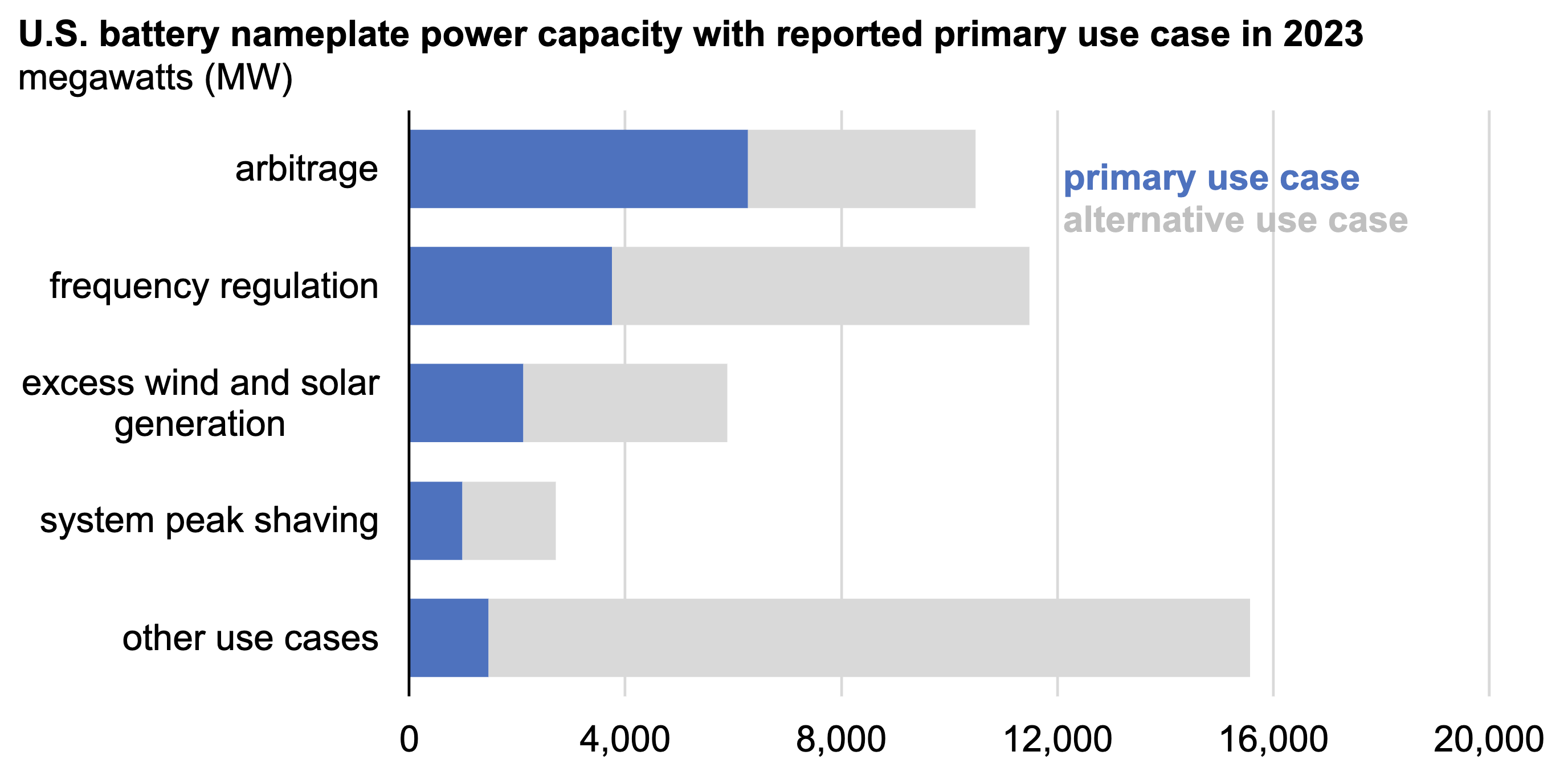Electricity utilities increasingly report using batteries to move electricity from periods of low prices to periods of high prices, a strategy known as arbitrage, according to new detailed information we recently published.

At the end of 2023, electricity utilities in the United States reported operating 575 batteries with a collective capacity of 15,814 megawatts (MW). We expect U.S. battery capacity will more than triple, adding 35,953 MW by the end of 2028 based on plans reported to us by utilities.
We recently published an early release of data from our EIA-860, Annual Electric Generator Report, which includes new detailed information on battery storage applications, including information on use cases, generator configuration, and other details on the energy capacity of planned batteries.
Utilities now report that arbitrage is the primary use case for 10,487 MW of battery capacity, making it the most reported primary use. In arbitrage, utilities charge batteries by buying electricity during low-cost periods and then sell that electricity when electricity prices increase.
Utilities can also make use of batteries to improve grid reliability with services that support the transmission of electricity, known as ancillary services. One type of ancillary service is frequency regulation, which is the most common use case reported at least once for battery capacity.
Most batteries are used in multiple ways and have been reported in prior data releases, but we recently began asking utilities to identify the primary purpose of the battery. The early release of the EIA-860 data is the first time we have published this data element.
Principal contributors: Alex Mey, Glenn McGrath. Article from Today in Energy.